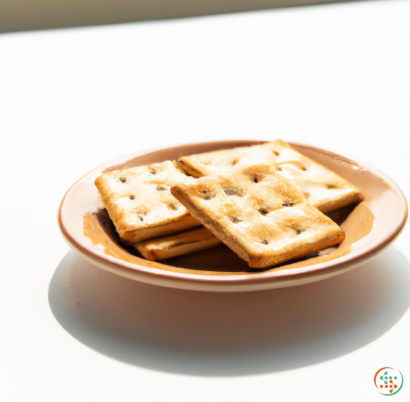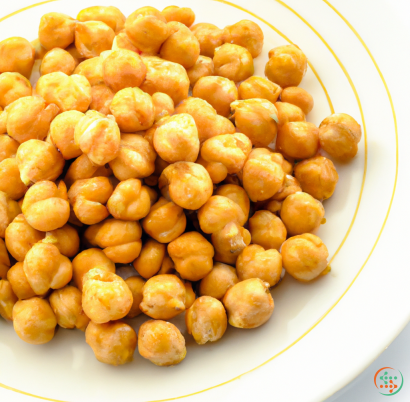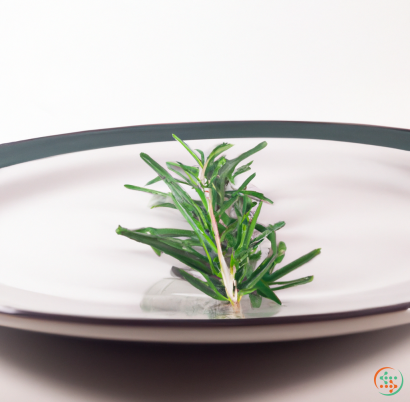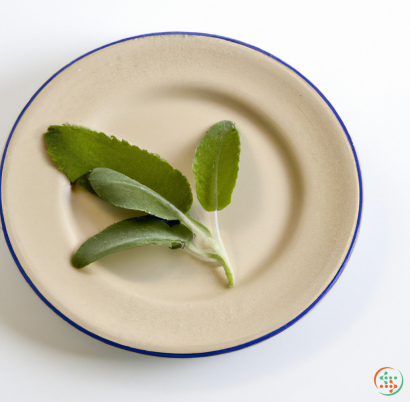Pigeon Peas
Pigeon peas (Cajanus cajan) are a type of legume, or a plant in the family Fabaceae. They are known for their hardy nature and the fact that they can grow in hot, dry climates. Traditionally, pigeon peas have been a staple crop in many parts of the world, particularly in tropical and sub-tropical regions.
Pigeon peas come from the Cajanus genus and are likely native to India and Sri Lanka regions. They are also known as Congo Peas, No-eye Peas, Red Grams, Gungo Peas, or even Tropical Green Peas.
These digestive-friendly legumes are packed with nutrients, including proteins and four grams of fiber per half-cup serving. These nutrients make the pigeon peas an essential part of the regular diet in the tropical areas they are cultivated in.
Pigeon peas are annual plants that thrive in acidic soils with temperatures between 70-110 degrees Fahrenheit (21-43 Celsius). The plant itself is relatively small, reaching only two to four feet in height. The leaves of the plant have a tough texture and are divided into three leaflets.
The flowers of the pigeon pea are a beautiful yellow color and contain a central “eye” that is surrounded by yellow petals. After the flower has bloomed, the pods will develop, which is when the peas inside can be harvested.
These peas can be cooked whole or split into dal (lentil), which is a dish often served in Indian cuisine. Pigeon peas dal is usually cooked with spices like cumin and turmeric, and can be accompanied by rice or flatbreads.
Although pigeon peas can be eaten fresh, they are usually dried and stored for later use, as it is a cost-effective way to preserve the crop. Dried pigeon peas can be used in all kinds of recipes, from soups, stews, and curries, to salads, side dishes, and even deserts like fritters or pancakes.
Pigeon peas are also known for their medicinal benefits. For example, the peas and their leaves contain several compounds that may have antioxidant, anti-inflammatory and other health-promoting effects. There’s also evidence that pigeon pea leaves may help reduce cholesterol levels in the blood.
In addition to their culinary and medicinal benefits, pigeon peas are an excellent source of nitrogen. This means that they can be used to fertilize other crops to help them grow better.
Due to their hardiness and adaptability, pigeon peas are becoming increasingly popular with gardeners and farmers all around the world. In recent years, the crop has spread to Latin America, Africa, and the Caribbean, making it one of the most widely grown agricultural products in the world.
Overall, pigeon peas are an incredibly versatile crop that can be used in a variety of ways. Whether you are looking to add them to your diet for their health benefits, use them as fertilizer for your garden, or include them in your favorite recipes, you can’t go wrong with these tasty and nutritious little legumes.
The Pigeon Pea, most commonly known in India and South Asia as "Toor Dal," is a small cream-colored legume with a rich nutty-flavor that has been a staple of South Asian cuisine for centuries. In India, Toor Dal is used to make an array of delicious dishes, such as sambar and dal makhani, with its unique taste and texture providing the perfect accompaniment to many other traditional dishes. The Pigeon Pea has not just been important in India, however, as it has been a central grain in African cuisines as well as Latin American, Caribbean, and Pacific Island cooking. It has been cultivated in those regions since ancient times and is an important source of nutrition, providing a balanced diet of high protein, carbohydrate, and essential vitamins and minerals.
But where does this nutrient-dense legume come from? How does it go from a tiny pea to a meal on your plate? Here, we’ll walk you through the full journey of the Pigeon Pea, from plant to plate.
The Planting Stage
The Pigeon Pea begins its journey as a small white seed, the size of a peppercorn. The seed is planted in a seedbed, usually from late December to early March when the soil temperature reaches 25 degrees Celsius, and is sown on either side of a ridge. The Pigeon Pea is a hardy plant and can grow in a variety of conditions, such as long periods of drought or under harsh conditions, meaning it can be grown in many parts of India and other countries, as well.
The Cultivation Stage
Once the seeds are sown, the plants take approximately three months to reach maturity. The Pigeon Pea is a hardy plant and can grow up to 1.5 meters tall, which makes it easier to cultivate than some other legumes. The plant is typically grown in plots with a spacing of 20 by 20 centimeters and is intercropped with cucurbits (i.e., melons and cucumbers) or cereals (like wheat). During the cultivation stage, weeding, pest and disease control, and irrigation management are necessary for healthy growth and high yields.
Harvesting
Once one to three months have passed, the plants will be ready for harvesting. The crop is ready for harvest when the pods have dried and the pea is mature and firm. A typical harvest can take anywhere from two to three months depending on the region, from the start of planting to the finish of harvest.
The harvesting process can vary from farm to farm, and manual or mechanized processes can be used. Manual harvesting is typical in India, with a group of people working together in teams to carefully pluck the ripe pods and leaves from the plant and place them into wicker baskets. Mechanized harvesting, however, has seen increasing popularity in recent years. This involves the use of a combine harvester – a large machine with a wide head that is used to harvest multiple grain crops at once, including the Pigeon Peas.
Once the harvesting process is complete, the peas are left in the field to dry slightly before they are bagged, weighed, and transported to the local markets.
Processing
Once the harvested Pigeon Peas have arrived at the local market, they undergo several further stages of processing.
The first step is for the peas to be husked and shelled. This involves peeling off the outer layer of the pea by rubbing it between the hands, followed by the shelling process which involves breaking open the pods and separating the peas from the shells. This can be done manually or with a machine.
Once the husking and shelling is complete, the peas will be cleaned and then either processed into flour (known as Toor Dal Flour) or left whole. The Toor Dal Flour is a popular alternative to whole peanuts and can be used to make a variety of dishes, such as dosas, dals, and curries.
Packaging and Transportation
Once the peas have been processed, they are then packaged into large sacks and transported to local markets. For international transportation, the Pigeon Pea is packed into airtight containers with controlled temperatures and transported by boat, plane, or truck.
Consumption
Once the Pigeon Pea has arrived at its destination, the last step is for it to be cooked and consumed. The Pigeon Pea is one of the most versatile legumes and can be used in a variety of ways to make a variety of delicious dishes. From basic dal recipes to flavorful curries and Bhartas to comforting soups, Pigeon Pea dishes can be customized to an individual’s tastes and preferences.
Conclusion
For centuries, the Pigeon Pea has been an important part of South Asian cuisine. From its planting to its harvesting to its processing, the journey of the Pigeon Pea is fascinating. It is a hardy legume that is easy to grow and provides essential nutrition for many households. So, next time you make a delicious dal or curry, take a moment to think about all of the steps taken to get the Pigeon Pea from the fields of India to your dinner plate.
| Vitamin B1 | 0.15 mg | |
| Vitamin B2 | 0.06 mg | |
| Vitamin B3 | 0.78 mg | |
| Vitamin B5 | 0.32 mg | |
| Vitamin B6 | 0.05 mg | |
| Vitamin B9 | 0.111 mg |
| Calcium | 0.043 grams |
Daily Value 1.3 g
|
| Iron | 0.00111 grams |
Daily Value 0.018 g
|
| Magnesium | 0.046 grams |
Daily Value 0.4 g
|
| Phosphorus | 0.119 grams |
Daily Value 1.25 g
|
| Potassium | 0.384 grams |
Daily Value 4.7 g
|
| Sodium | 0.005 grams |
Daily Value 2.3 g
|
| Zinc | 0.9 mg |
Daily Value 0.011 g
|
| Copper | 0.27 mg |
Daily Value 0.9 mg
|
| Manganese | 0.5 mg |
Daily Value 0.0023 g
|
| Selenium | 0.0029 mg |
Daily Value 0.055 mg
|
| Tryptophan | 0.066 grams | |
| Threonine | 0.239 grams | |
| Isoleucine | 0.245 grams | |
| Leucine | 0.483 grams | |
| Lysine | 0.474 grams | |
| Methionine | 0.076 grams | |
| Cystine | 0.078 grams | |
| Phenylalanine | 0.579 grams | |
| Tyrosine | 0.168 grams | |
| Valine | 0.292 grams | |
| Arginine | 0.405 grams | |
| Histidine | 0.241 grams | |
| Alanine | 0.303 grams | |
| Aspartic Acid | 0.669 grams | |
| Glutamic Acid | 1.568 grams | |
| Glycine | 0.25 grams | |
| Proline | 0.298 grams | |
| Serine | 0.32 grams |
| Total Sugars | 0.131141 grams |
per 100g
|
| Palmitic acid (16:0) | 0.08 grams |
|
| Stearic acid (18:0) | 0.01 grams |
|
| Total Saturated fatty acids: | 0.09 g | |
| Linolenic acid (18:3) | 0.01 grams |
|
| Linoleic acid (18:2) | 0.2 grams |
|
| Total Polyunsaturated fatty acids: | 0.21 g | |







